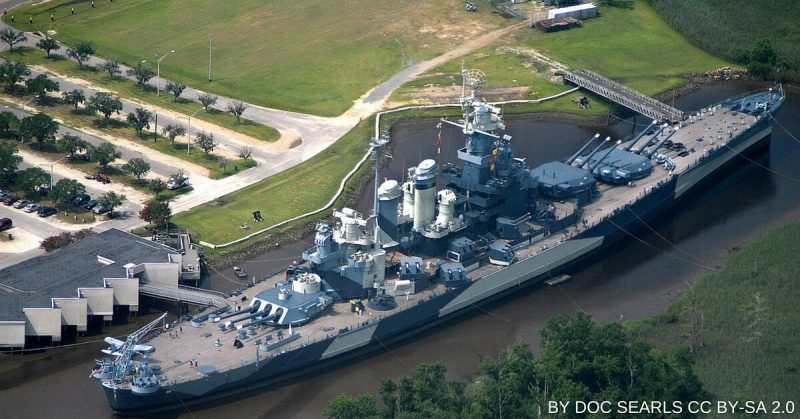A resident of Wilmington, N.C., has made it his mission to get the southern port city recognized by the U.S. government for its contribution efforts during WWII.
Wilbur D. Jones, 81 years old, has spent the last 16 years campaigning for the city to be established as an “American World War II City” and has even testified before Congress along with local legislators.
The city is steeped in WWII history and boasts several institutions and historical sites that Jones believes should be linked with other local seaside towns to form a trail that will be considered a “museum of the home front.”
The U.S.S. North Carolina battleship has been docked in the Cape Fear River since 1961 and is one of the city’s biggest attractions. This battleship fought in the Pacific during WWII and serves as a memorial for the WWII veterans of Wilmington. Mr. Jones actively conducts two-hour tours along the trail, which includes exhibitions dedicated to the war in the Wilmington Railroad Museum and the Cape Fear Museum of History and Science.
Jones is a retired U.S. Navy captain who returned to Wilmington in 1997 following a career in Washington. He was only seven years old when the attack on Pearl Harbor took place, and his parents were part of the wartime volunteer effort.
The tour starts at the Robert Strange Park, which is a former WWII prisoner-of-war camp for German prisoners. Approximately 550 of General Erwin Rommel’s Afrika Korps men were imprisoned there. The prisoner-of-war camp was situated in the heart of the neighbourhood and residents would come out of their homes to stare at the prisoners.
The second stage of the tour is the Fort Fisher State Historic Site, which is 18 miles outside the town. This site served as a training base for anti-aircraft gunners during WWII and also was used during the Civil War by Union forces.
It’s then onto Kure Beach for the next leg of the tour. According to Jones, this popular tourist spot is where German submarines made their only attack on the Eastern Seaboard. On an evening in July 1943, a German U-boat surfaced right in front of a couple who were relaxing on their front porch. It fired shots from its deck gun at the Ethyl-Dow chemical plant but missed. Not everyone is convinced this even happened, but Jones believes that it did. He said, “I believe so. There’s heavy circumstantial evidence.”
The last stop on the tour is the Hannah Block Historic U.S.O., which remains as a memorial to the organization that provided entertainment to members of the armed forces. The 60-year-old Walter Sclafani, who recently took Jones’s tour, “You really can almost feel what it must have been like for all these guys. For a lot of them, this was probably the last place that they visited before being sent overseas.”
If the House of Representatives and the Senate agree to bestow the city of Wilmington with the title of “American World War II City,” then Wilmington will become the first city to hold the title, and this will go some way in helping to draw in more tourists to the city.
